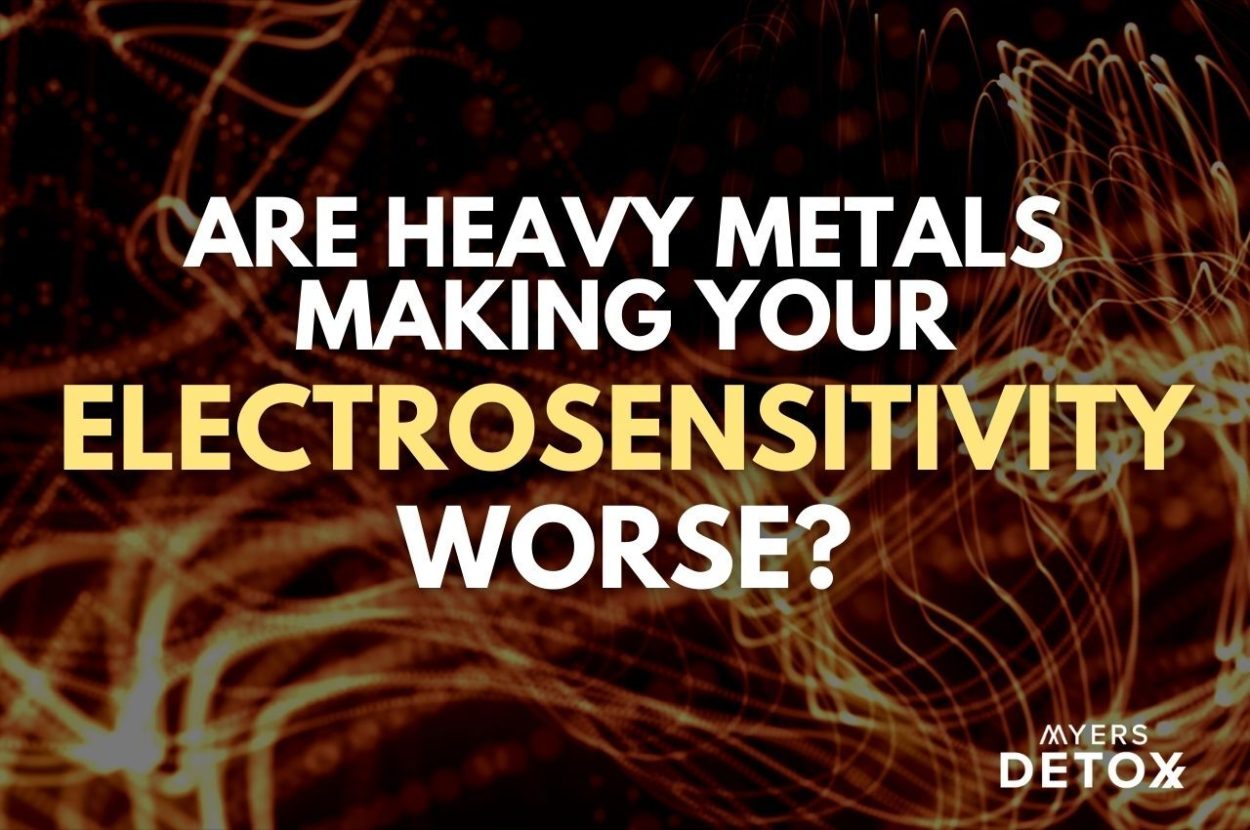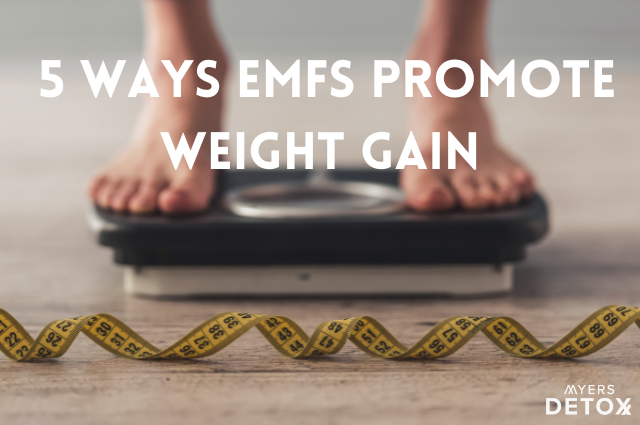Are heavy metals making your electrohypersensitivity worse? The harmful effects of EMFs have been well documented at this point. What remains unclear, however, is why some people are more affected than others. EMF exposure impacts us all, but not every person experiences the same symptoms and to the same degree. Why many experience electrohypersensitivity, but others don’t.
Emerging evidence shows that heavy metal toxicity may contribute to the adverse effects of EMFs on the human body.
In this article, you’ll learn:
- How heavy metals in your body act as conductors for EMFs
- The difference between biologically essential metals, and toxic metals
- The detrimental effects that EMFs and metals have on your immunity and wellness
- The first step you must take in assessing your vulnerability to EMFs
Our Environment Is Contaminated
Regretful as it may be to say, our environment is contaminated with pollutants. And it’s not only the physical toxins that we need to worry about but also the invisible ones.
I’m referring, of course, to EMFs (electromagnetic fields). EMFs are everywhere these days. Emitted from computers, bluetooth electronics, power lines, WiFi, cell phones, electrical appliances, and so on — these frequencies of energy have become nearly inescapable[1].

But EMFs aren’t the only thing that’s contaminating our natural world. Increasingly high levels of heavy metals can be found in everything from our soil to our drinking water[2].
While these two pollutants alone can cause serious harm to your body and mind, it’s the combination of EMFs and heavy metals that should really stop you in your tracks. Your body is an electrical organism that requires trace amounts of specific metals to function properly.
Issues occur, however, when your electromagnetic field is compromised, and the level of metals in your body is out of balance.
When these two forces come together, the interplay can be powerful and downright dangerous.
How Heavy Metals Conduct Electricity
To understand how EMFs and heavy metals affect your body, we must begin with the concept of electromagnetism.
Electromagnetism, as the name suggests, is the science of electricity and magnetism. In your body, you have electric and magnetic fields that induce small currents. These currents depend on specific metals and your own energetic field to circulate them around[3][4].
We can define electricity as the movement of electrons. Electrons circle the outside of a nucleus of an atom, with some being held tightly in place and others that are more easily transferred to neighboring atoms[5] .
Metals happen to have electrons that are more “portable” for lack of a better term. In other words, with little force, the electrons of metal atoms can move around quite easily.
This movement makes metals excellent conductors of energetic currents. In fact, your heart and nervous system rely on the conductivity of the metals in your body to keep things flowing smoothly.
But here is the differentiating factor — some metals are essential to your health, while other metals are toxic.
Toxic Metals Vs. Essential Metals
Trace minerals, which can also be called essential metals, like iron, zinc, copper, manganese, selenium, and chromium play crucial roles in your body. They not only keep the electromagnetism flowing, but they’re involved in everything from immune health to the production of blood cells, and much more.
When you ingest these biologically essential metals or minerals, your body assimilates them into your cells and tissues, and they start work synergistically with the rest of your body.
Heavy metals like mercury, lead, and uranium, on the other hand, are toxic and dangerous to your health. They are not assimilated and integrated into your tissues, instead, they build up in your body. And they play no beneficial or necessary physiological role – they only poison enzymes and proteins and create chaos.
The Impact Of Energy Fields And Metals In Your Body
The electrons of a metal won’t just up and move around on their own; they need some outside force to get them going.
In your body, there’s a natural magnetism that creates subtle electrical currents. This magnetic energy impacts the essential metals in your body to generate the movement of electrons. The movement of electrons results in your electromagnetic field and plays a crucial role in cellular communication[6][7].
But what happens when you have heavy metals that don’t belong in your body? As previously mentioned, heavy metals aren’t integrated into your system the way that essential minerals like iron, zinc, selenium, and chromium are. Instead, they can become lodged and stored in your tissues — just waiting to cause trouble.
Just like the essential metals, heavy metals are excellent conductors of energy. However, since they aren’t biologically necessary, they sit idly by and can pick up on non-biological electromagnetism in your environment (like EMFs).
The electromagnetic currents of EMFs don’t resonate with your natural biology. This means that heavy metal build up in your body acts like a conductor to draw incoherent energy fields in and around your body.
Heavy Metals, EMFs, and Your Immune System
Pollutants like EMFs and heavy metals can create undue stress on your immune system. The top 4 metals that negatively affect your immune system are lead, mercury, arsenic and cadmium.
These heavy metals have the ability to either stimulate or suppress your immune activity. When suppressed, your immune system is weakened and lacks the horsepower to fight off pathogens like viruses and bacteria. This increases your susceptibility to illnesses and diminishes your immune system’s energy reserves[8][9].
When overstimulated, your immune response can go into overdrive, creating excessive amounts of inflammation and oxidative stress. This can result in chronic inflammatory processes, hypersensitivity, and autoimmunity[10].
Furthermore, heavy metals can interfere with your gut microbiome, which plays a crucial role in immunity. Research shows that heavy metal toxicity can diminish your good bacteria and increase the number of harmful pathogenic bacteria[11][12][13][14].
When your gut bacteria is out of balance, inflammation can ensue, resulting in leaking gut (intestinal permeability). When you have a leaky gut, your intestinal lining’s junctions become loosened, and molecules that typically wouldn’t be able to pass through are allowed into your internal circulation. This can result in immune compromises like autoimmunity[15].
EMFs also play a role in immune dysregulation, stimulating allergic and inflammatory responses, and inhibiting tissue repair[16]. These frequencies can also impact the balance of your gut microbiome, increasing the growth of pathogenic bacteria while halting the growth of beneficial bacteria — much like heavy metals[17].
What’s more, research shows that EMFs may be increasing antibiotic resistance in pathogenic bacteria.
When bacteria become antibiotic-resistant, they develop the ability to survive and overcome the effects of antibiotics. This can lead to harmful bacteria flourishing in your body and pushing out the beneficial bacteria that are meant to balance them[18][19].
Electromagnetic Hypersensitivity (EHS)
Electromagnetic hypersensitivity (EHS) is a clinical term used to describe the impact that EMFs can have on some individuals. EHS can show up in a myriad of ways affecting the neurological, cardiovascular, and immune systems, among others.
Some symptoms of EHS include dizziness, anxiety, headaches, memory issues, trouble with sleep, poor concentration, and fatigue[20].
EHS can show up on a spectrum, with some people experiencing severe symptoms, and others only mild to moderate.
It’s hypothesized that the presence of heavy metals in your body could directly impact the severity of electromagnetic hypersensitivity due to their ability to conduct energy from outside fields.
Many people with EHS also appear to have impaired detoxification systems, leading to greater levels of heavy metals, higher levels of oxidative stress, and perhaps a more difficult time removing heavy metals[21]. And this further corroborates the link between heavy metal toxicity leading to EHS.
How To Determine Your Heavy Metal Load
With the understanding of how heavy metals can increase the harmful effects of EMFs, your first step in assessing your EMF vulnerability is to look at the levels of heavy metals in your body.
The best way to determine the amount of metals you’re carrying in your body is through a hair tissue mineral analysis (HTMA). This process is simple and efficient in helping you determine the amount of heavy metals stored in your body, as well as any mineral deficiencies you may have.
An HTMA is done at home, only requires a small amount of hair, is noninvasive and tests dozens of metals.
Aside from the impact that heavy metals can have on the way your body responds to EMFs, these toxic compounds can interfere with several vital biological processes. Therefore, even if you aren’t experiencing electrohypersensitivity symptoms, having an HTMA done regularly is a fantastic preventative tool for ensuring that you aren’t harboring heavy metals in your body.
If, however, you suspect you are EHS or are experiencing symptoms of electrohypersensitivity, then taking an HTMA is a crucial first step in helping you combat the ill effects that EMFs may be causing you.









